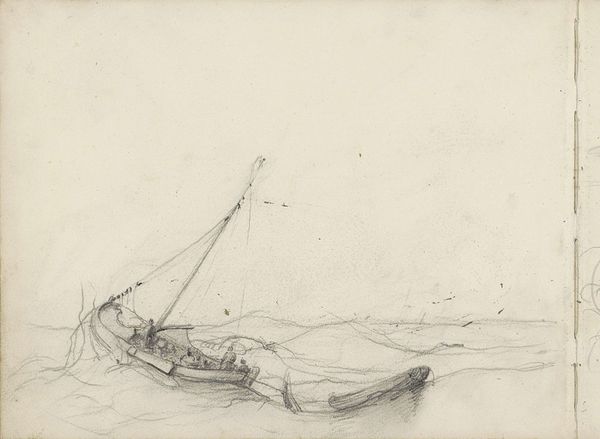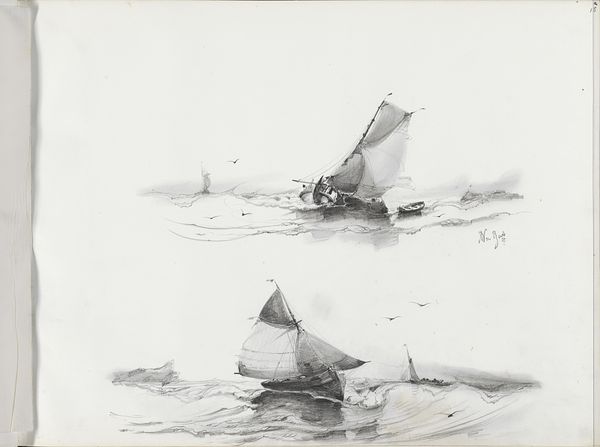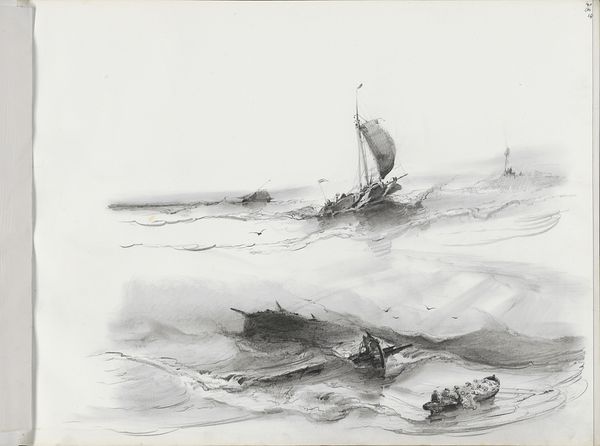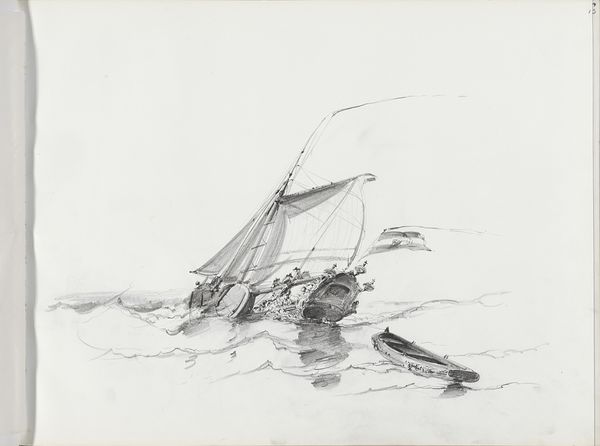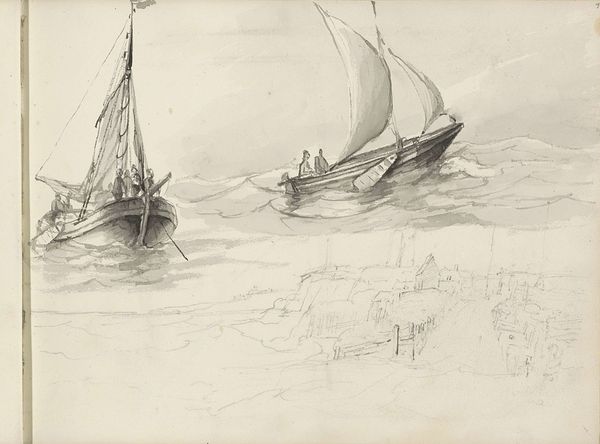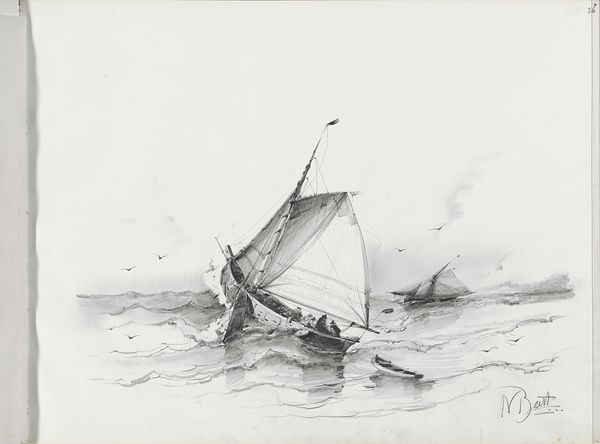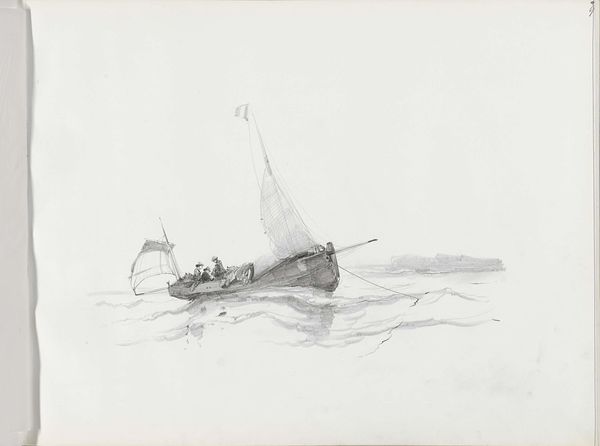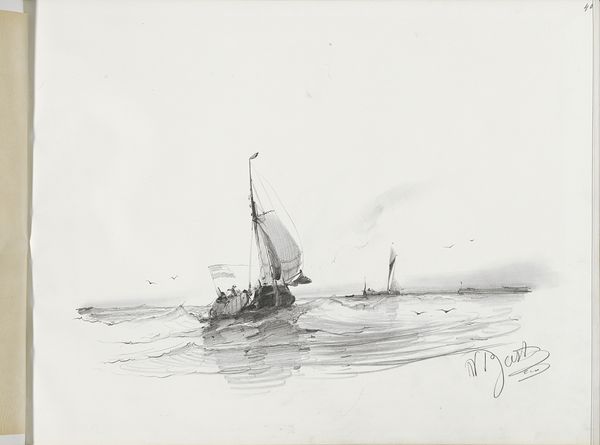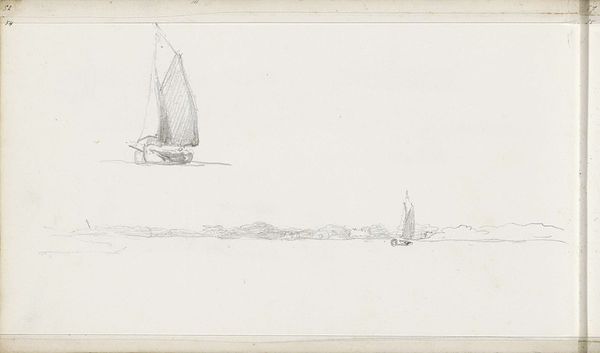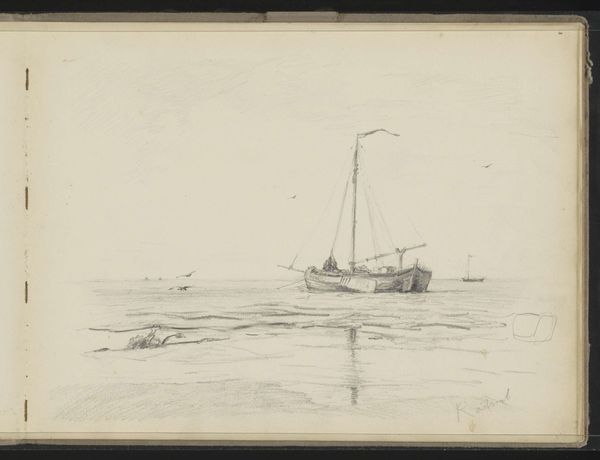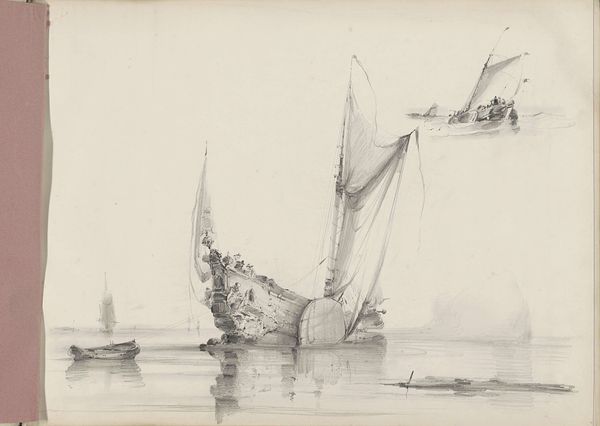
drawing, paper, pencil
#
portrait
#
drawing
#
landscape
#
figuration
#
paper
#
plant
#
pencil
#
realism
Copyright: Rijks Museum: Open Domain
Curator: At first glance, this strikes me as a quiet scene. A lone sailboat, almost lost amidst the reedy shore and the vast expanse of water and sky. There’s a sense of isolation, perhaps even melancholy. Editor: You've hit on that feeling quite accurately. What we are looking at is a drawing by Albertus van Beest titled “Two Men in a Sailboat Near a Reed Collar," likely created between 1830 and 1860. It's pencil on paper and can be found here at the Rijksmuseum. Curator: The technique is so delicate. The texture of the reeds is almost palpable, achieved through subtle variations in pressure. And the rendering of the water’s surface captures movement, reflection… almost an impressionistic feel. What can you tell me about this Albertus van Beest? Editor: The artist lived in a time of vast social and political transformation. Industrialization had led to new markets for mass produced art objects and it's crucial to remember the economic systems that allow people the freedom to engage in activities like sailing and landscape drawings like these. As a landscape artist, he navigated a social and historical moment that celebrated a sentimental nationalism. Curator: Interesting—the labor that enables leisure. I hadn't thought of it that way, although there is that connection with industrial production because pencil production itself was evolving in terms of its technology and accessibility during van Beest's career. And it makes me wonder what these two figures represent in terms of masculinity during that period? They almost blend in as a component of the landscape itself. Editor: Right, we should absolutely consider the societal norms governing the actions and freedoms of these men, particularly in contrast to women during this era and the intersection of the societal demands for production in the new capitalist markets. What narratives does the drawing conceal about class and gender? Are these men leisurely observing the environment or earning their livelihoods through this labor? Curator: And the question of art versus craft arises again, I suppose, in such a quietly skilled pencil drawing such as this one. The level of detailing across such a sparse selection of materials feels noteworthy and challenges the grand oil paintings and narrative pieces so prominently positioned within our history. It brings an intimacy that monumental painting would be hard pressed to recreate. Editor: These pencil markings on a paper page are powerful indicators that what constitutes artistic value continues to morph over time! Thank you for your insights, it helps enrich how we examine Albertus van Beest’s art! Curator: The pleasure was all mine! Looking at the physical manifestation of this artist's labors truly adds another facet to its reception.
Comments
No comments
Be the first to comment and join the conversation on the ultimate creative platform.


